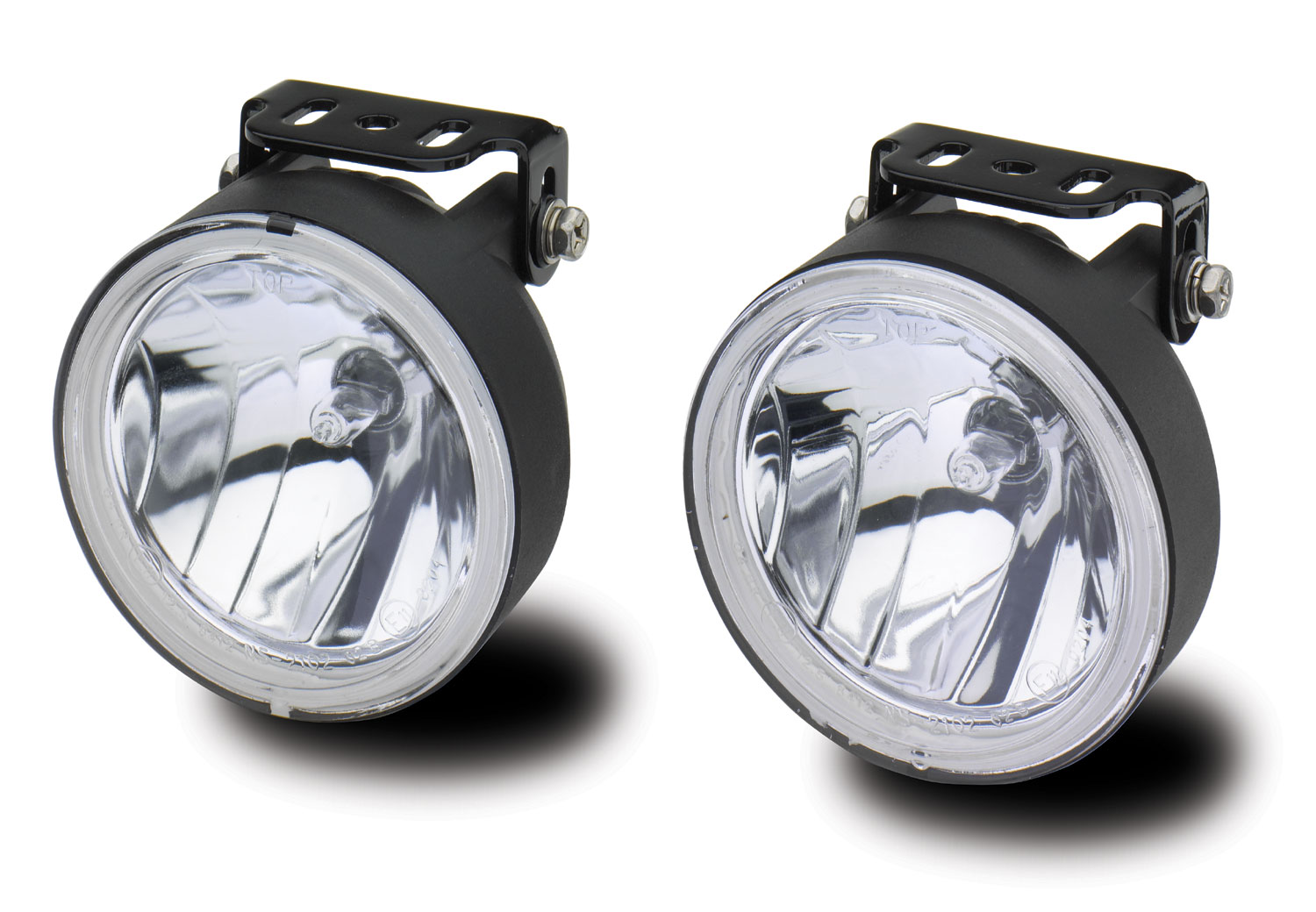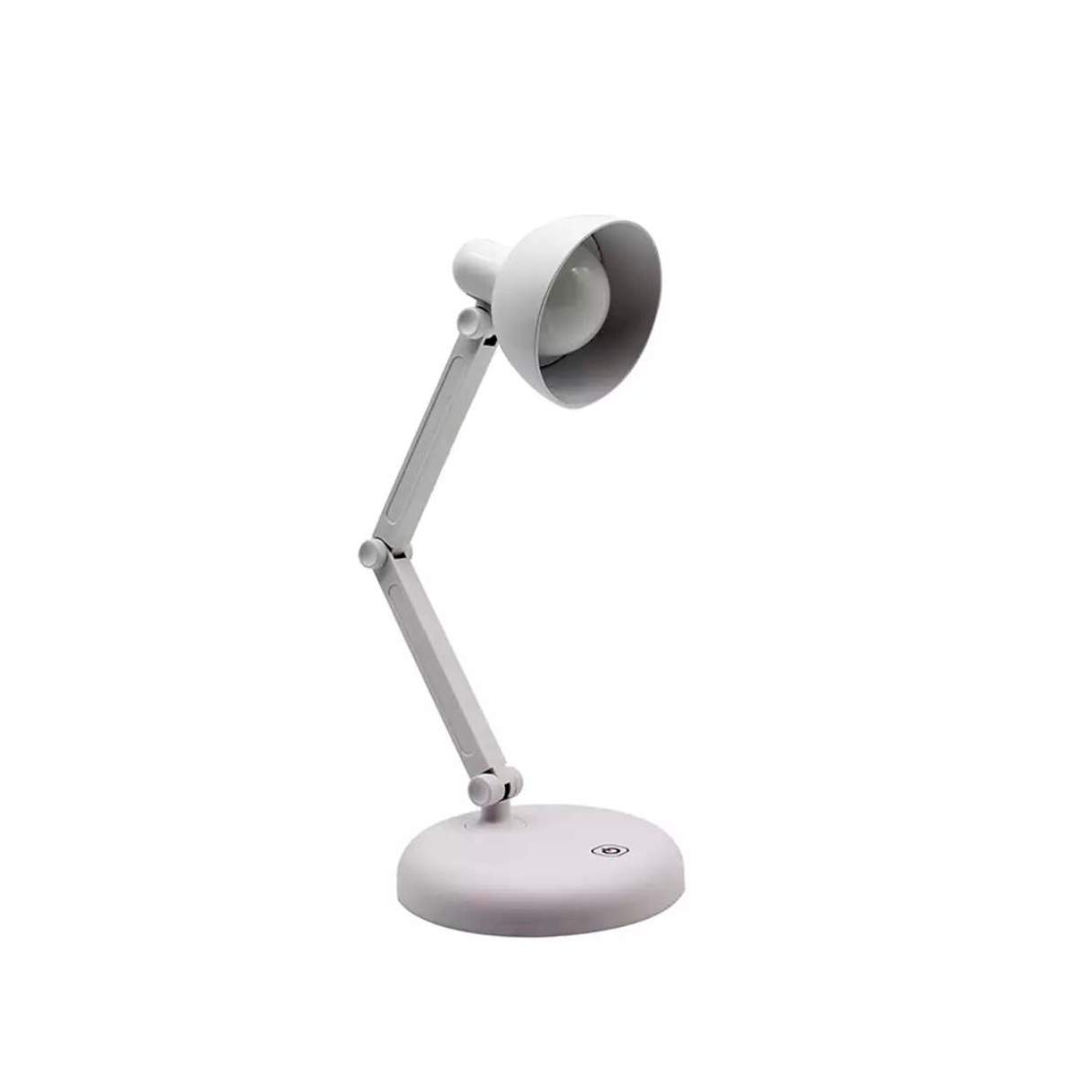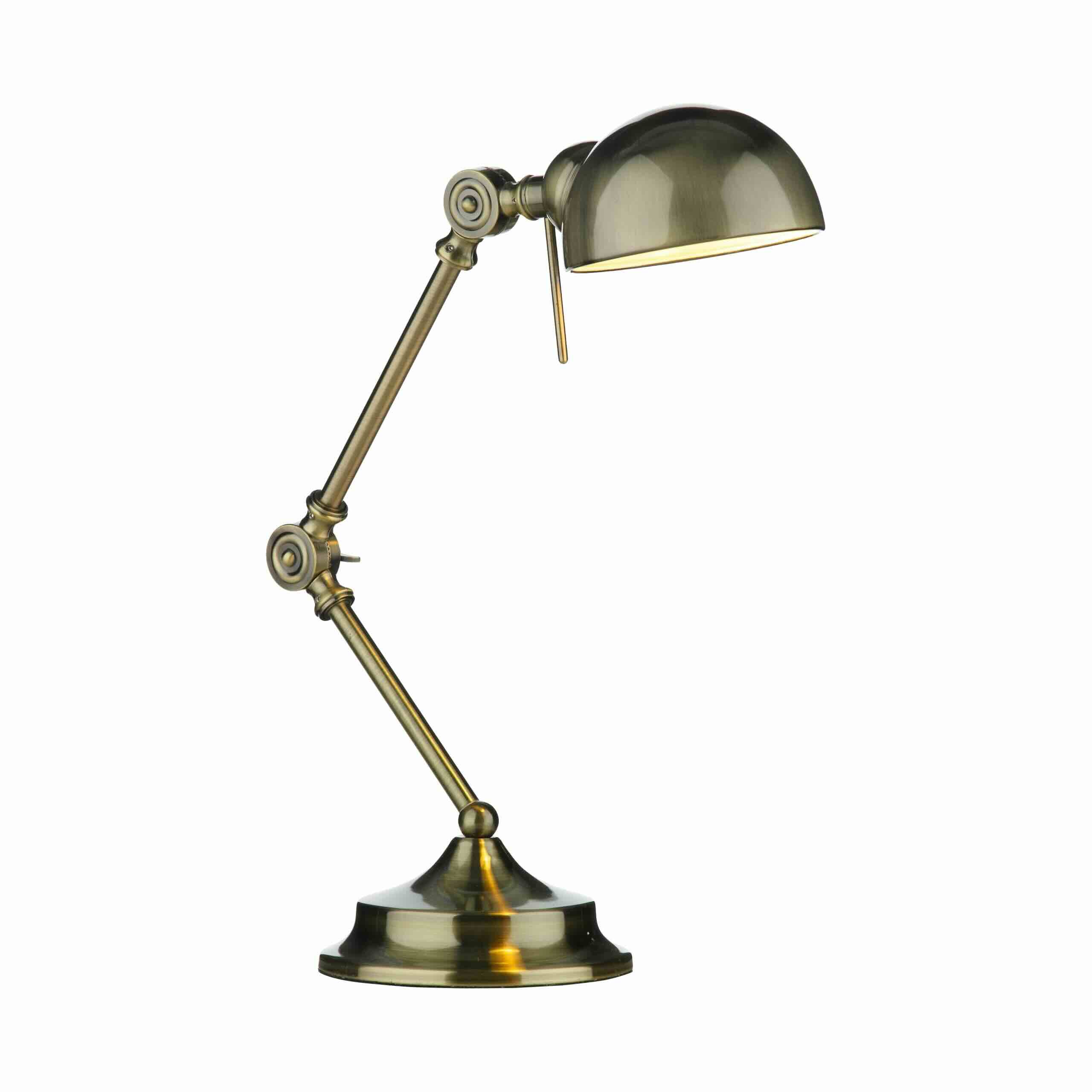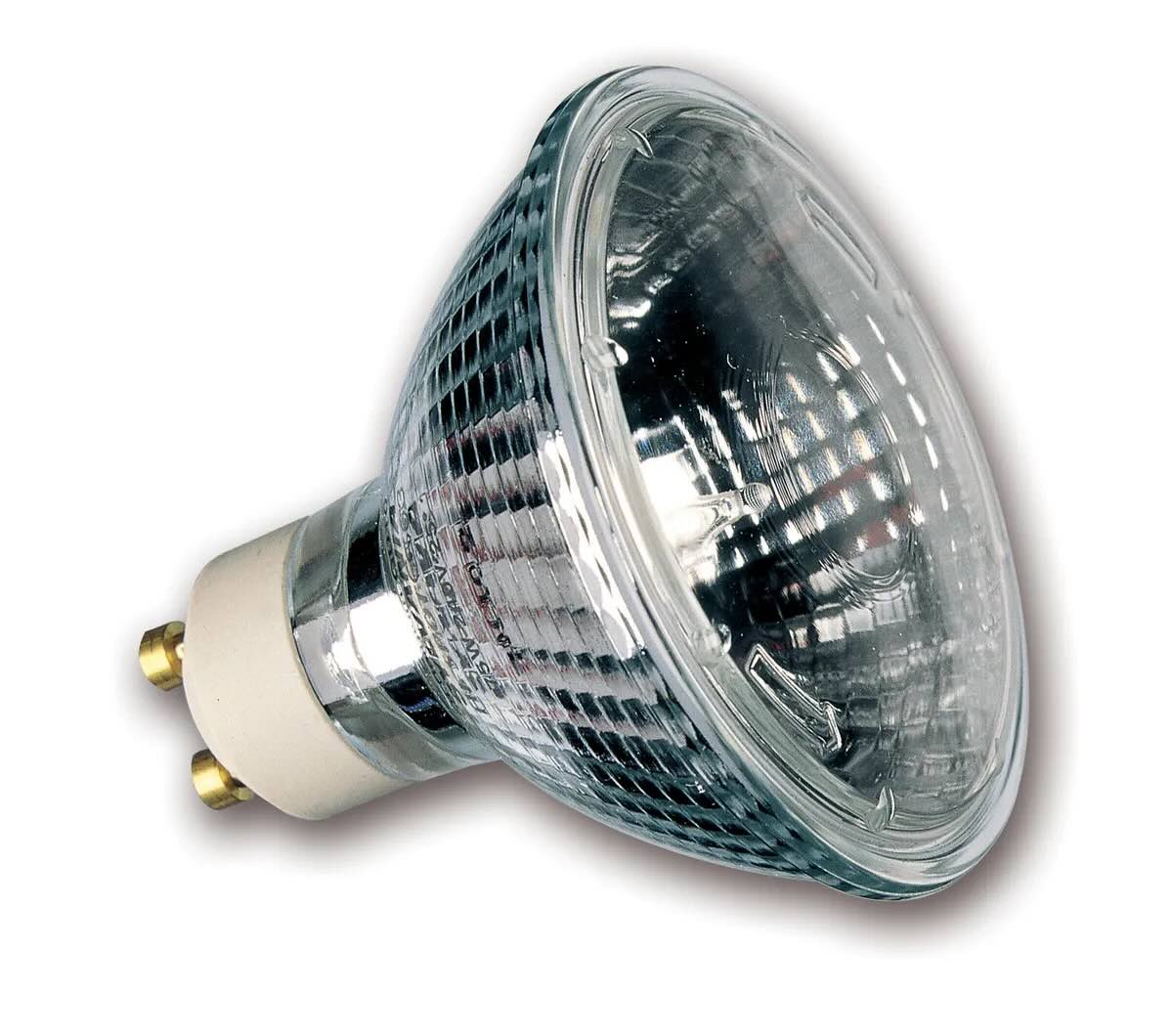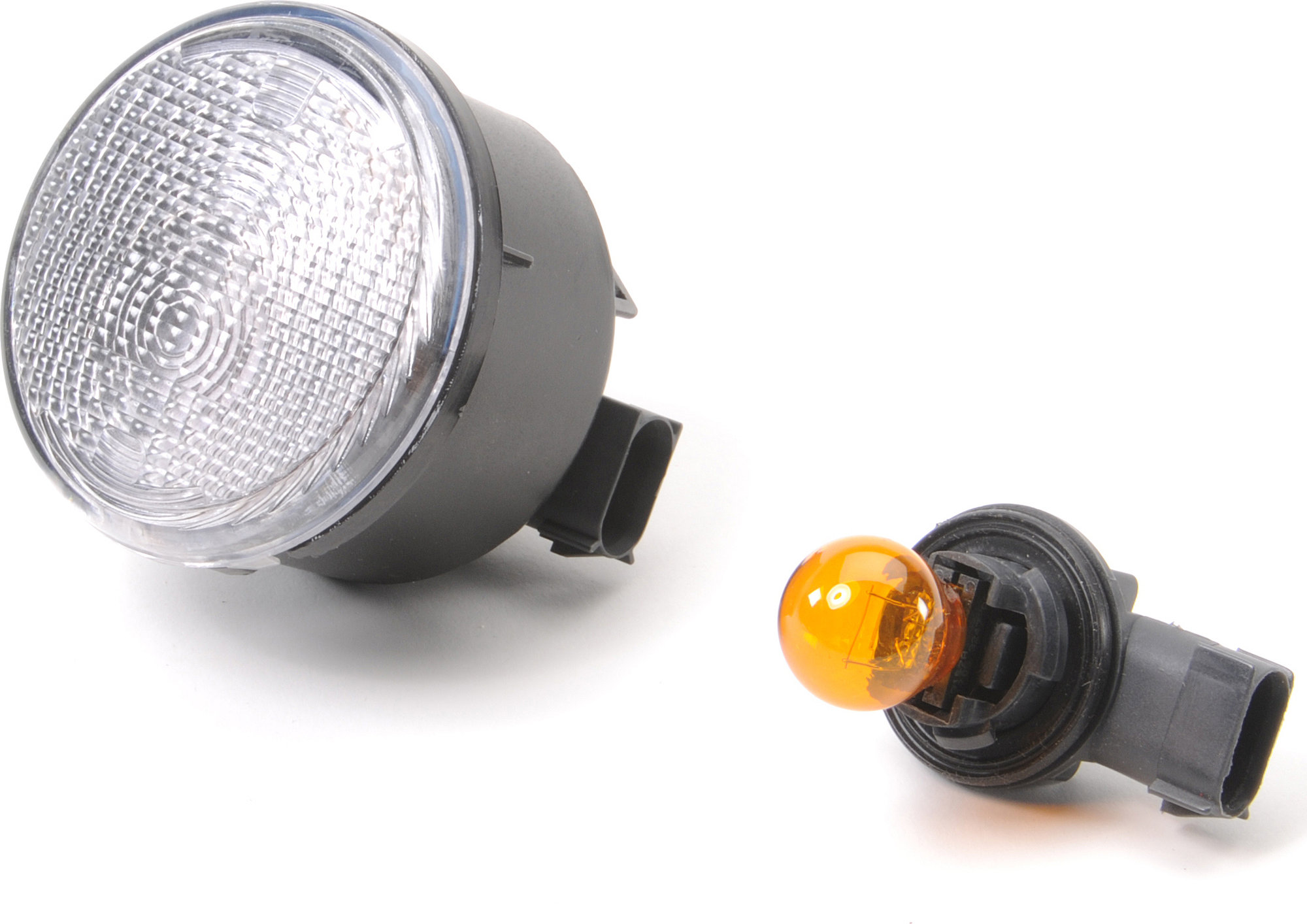

Furniture
What Is A Parking Lamp
Modified: December 7, 2023
Discover the importance of parking lamps for your furniture. Learn how these essential accessories provide added safety and style to your outdoor parking area.
(Many of the links in this article redirect to a specific reviewed product. Your purchase of these products through affiliate links helps to generate commission for Storables.com, at no extra cost. Learn more)
Introduction
Welcome to the fascinating world of parking lamps! These often overlooked components play a crucial role in providing safety and convenience in the world of automotive lighting. When it comes to ensuring visibility and signaling your vehicle’s presence, parking lamps are an essential feature that should not be underestimated.
Whether you’re a car enthusiast, a DIY mechanic, or simply someone curious about the inner workings of their vehicle, this article will provide you with a comprehensive understanding of parking lamps and their significance in the automotive industry.
Parking lamps, also known as parking lights or clearance lights, are an integral part of a vehicle’s lighting system. They are typically located on the front and rear of the vehicle, usually adjacent to the headlights and taillights. While their primary purpose is to indicate the presence of a parked vehicle, they also help improve visibility in low-light conditions.
The primary function of parking lamps is to provide visual cues to other drivers, pedestrians, and road users, alerting them to the presence and position of a parked vehicle. This is especially important in situations where the vehicle is parked in poorly-lit areas or along the side of the road. By illuminating these lamps, drivers can ensure that their vehicles are clearly visible to others, reducing the risk of accidents or collisions.
There are two main types of parking lamps: front parking lamps and rear parking lamps. Front parking lamps are typically amber or white in color and are positioned on the front corners of the vehicle, usually integrated into the headlight assembly. Rear parking lamps, on the other hand, are usually red or amber and are located on the rear corners of the vehicle.
Parking lamps are typically wired to activate whenever the vehicle’s parking or “P” mode is engaged, or the ignition is turned off and the headlights are not in use. In some vehicles, they may also function as Daytime Running Lights (DRLs), providing additional visibility during daytime hours.
Regulations regarding the usage of parking lamps may vary by country or region. In some places, it is required by law to have parking lamps illuminated in certain situations, such as when parking along a road at night. It is important to familiarize yourself with the local laws and regulations regarding the usage of parking lamps to ensure compliance and safety.
Having functional parking lamps offers several benefits. Not only do they enhance the safety and visibility of your vehicle, but they also fulfill a legal requirement in many regions. Additionally, parking lamps allow you to efficiently communicate your intentions to other drivers, ensuring a smoother flow of traffic and minimizing the likelihood of accidents.
In the next sections of this article, we will explore the different types of parking lamps, how they work, the regulations surrounding their usage, common issues faced, and tips for maintenance and replacement. So, let’s dive deeper into the world of parking lamps and discover all there is to know about these essential automotive components!
Key Takeaways:
- Parking lamps are essential for visibility and safety, indicating a parked vehicle’s presence and contributing to a smoother flow of traffic. Understanding their purpose and benefits is crucial for responsible driving.
- Regular maintenance and compliance with regulations are key to ensuring parking lamps function optimally, enhancing visibility and contributing to a safer driving environment.
Read more: What Is A Parking Lamp Malfunction In BMW
Definition of Parking Lamp
A parking lamp, also known as a parking light or clearance light, is a component of a vehicle’s lighting system that is designed to provide visibility and indicate the presence of a parked vehicle. It is typically located on the front and rear corners of the vehicle, adjacent to the headlights and taillights.
The primary purpose of a parking lamp is to make a parked vehicle clearly visible to other drivers, pedestrians, and road users. It serves as a signal to indicate that the vehicle is not in motion and may be parked alongside the road or in a parking lot. By illuminating the parking lamps, drivers can reduce the risk of collisions or accidents by ensuring that their parked vehicles are easily seen by other road users, especially in low-light or adverse weather conditions.
Parking lamps are typically smaller in size compared to headlights and taillights. They are often fitted with an amber or white lens on the front of the vehicle and red or amber lens on the rear. The use of different colors helps distinguish between the front and rear parking lamps.
While the primary function of parking lamps is to indicate the presence of a parked vehicle, they can also be used in conjunction with other lights to enhance visibility during certain situations. In some vehicles, parking lamps may function as Daytime Running Lights (DRLs), providing added visibility during the day to increase the vehicle’s presence on the road.
It is important to note that parking lamps are different from turn signals or hazard lights. Turn signals are used to indicate the intention to change direction, while hazard lights are used to warn other road users of a stationary vehicle or potential hazard. Parking lamps, on the other hand, are solely used to indicate that a vehicle is parked and not in motion.
Overall, parking lamps are an essential component of a vehicle’s lighting system, offering both safety and legal compliance benefits. By ensuring that your parking lamps are in working order and utilizing them correctly, you can enhance the visibility of your parked vehicle and contribute to a safer driving environment.
Purpose of Parking Lamp
The purpose of a parking lamp is multifaceted, serving both functional and safety-related objectives. While its primary function is to indicate the presence of a parked vehicle, parking lamps fulfill several key purposes that contribute to overall road safety.
One of the primary purposes of parking lamps is to provide visibility to other road users during low-light conditions. By illuminating the parking lamps, drivers can ensure that their parked vehicles are visible to approaching vehicles, pedestrians, and cyclists. This is particularly important in situations where vehicles are parked along a road, in poorly lit areas, or in dimly lit parking lots.
Parking lamps also play a significant role in enhancing the visibility of a parked vehicle in adverse weather conditions, such as heavy fog, rain, or snow. By activating the parking lamps, drivers can improve their vehicles’ visibility, making it easier for other drivers to detect their presence and take appropriate precautions.
Another purpose of parking lamps is to communicate the status of a parked vehicle. When a driver engages the parking mode or turns off the ignition, activating the parking lamps informs other road users that the vehicle is not in motion. This prevents potential confusion and helps avoid unnecessary accidents or incidents.
In addition to providing visibility and indicating the presence of a parked vehicle, parking lamps also contribute to the overall aesthetics of the vehicle. Often positioned on the front and rear corners, parking lamps help accentuate the vehicle’s design and add to the overall appeal.
Furthermore, parking lamps can serve as a deterrent to unauthorized movements of parked vehicles. By having the parking lamps illuminated, it signals to potential thieves or vandals that the vehicle is actively monitored and may discourage any attempts of unauthorized activity.
It is important to note that while parking lamps enhance visibility and contribute to road safety, they have limitations. Parking lamps are not as bright as headlights or taillights, and they should not be used as substitutes for these essential lighting components. Therefore, it is crucial to use parking lamps alongside the appropriate headlights or taillights when driving during low-light conditions.
Overall, the purpose of parking lamps includes improving the visibility of parked vehicles, communicating the vehicle’s status, enhancing the overall aesthetics, and contributing to road safety. By understanding and utilizing the purpose of parking lamps, drivers can ensure compliance with regulations, minimize the risk of accidents, and create a safer environment for all road users.
Types of Parking Lamps
Parking lamps come in various types, each designed for specific purposes and aesthetic preferences. Let’s explore the different types of parking lamps commonly found in vehicles:
- Halogen Parking Lamps: Halogen parking lamps are the most commonly used type in vehicles. They use a halogen gas-filled bulb to produce a bright, white light that enhances visibility. Halogen parking lamps are energy-efficient, durable, and relatively affordable.
- LED Parking Lamps: LED (Light Emitting Diode) parking lamps are gaining popularity due to their numerous advantages. These lamps use light-emitting diodes to generate bright, focused light. LED parking lamps are highly energy-efficient, have a longer lifespan, and provide instant illumination. They also offer the flexibility to incorporate various lighting designs and can produce a wide range of colors.
- Xenon or High-Intensity Discharge (HID) Parking Lamps: Xenon or HID parking lamps utilize xenon gas and an electric arc to produce an intense bright light. These lamps offer superior brightness and a longer lifespan compared to halogen lamps. Xenon parking lamps provide a white, pure light that enhances visibility, making them a popular choice among car enthusiasts.
- Incandescent Parking Lamps: Incandescent parking lamps are the traditional type of lamps that use a filament to produce light. While they are less common in modern vehicles, they still exist in some older models. Incandescent parking lamps are cost-effective but have a shorter lifespan and consume more energy compared to newer technologies.
- Integrated Parking Lamps: Integrated parking lamps are designed to seamlessly blend with the vehicle’s headlight or taillight assemblies. These lamps are incorporated into the same housing as the headlights or taillights, providing a cohesive and streamlined appearance. Integrated parking lamps often use LED technology for improved visibility and aesthetics.
When choosing the type of parking lamp for a vehicle, factors such as brightness, energy efficiency, longevity, and design preferences should be considered. It is also important to ensure that the chosen parking lamps comply with local regulations and requirements.
Furthermore, car owners can enhance the appearance of their parking lamps by opting for different lens colors. While amber or clear lens colors are most commonly used, some vehicles may have parking lamps with red or smoked lenses for a distinct look.
Ultimately, the choice of parking lamps depends on personal preferences, budget, and the desired aesthetic appeal. However, regardless of the type chosen, it is crucial to prioritize functionality, compliance with regulations, and the safety of oneself and other road users.
How Parking Lamps Work
Parking lamps, also known as parking lights or clearance lights, operate using a simple yet effective mechanism. Let’s delve into how parking lamps work:
Parking lamps are typically wired to activate when the vehicle’s parking mode is engaged or the ignition is turned off, and the headlights are not in use. This allows drivers to indicate that their vehicles are parked and not in motion. In some vehicles, parking lamps may also function as Daytime Running Lights (DRLs) to enhance visibility during daytime hours.
The electrical circuit for parking lamps is designed to provide power to the bulbs and illuminate the lights. When the driver activates the parking mode or turns off the ignition, a switch inside the vehicle sends a signal to the parking lamp circuit. This triggers the flow of electrical current from the vehicle’s battery to the parking lamp bulbs.
The parking lamp bulbs, whether halogen, LED, xenon, or incandescent, contain filaments or diodes that emit light when electricity passes through them. As the current flows through the bulb’s filament or diodes, it heats up, causing it to glow and produce light.
The light generated by the parking lamp bulbs illuminates the respective parking lamps, located on the front and rear corners of the vehicle. By doing so, the lamps provide visual cues to other drivers, pedestrians, and road users, indicating the presence and position of a parked vehicle.
In vehicles with integrated parking lamps, where the parking lamps are integrated into the same housing as the headlights or taillights, the functioning is similar. However, the parking lamp circuit is connected to the main headlight or taillight circuit, allowing for a unified operation.
It is important to note that parking lamps are not as bright as headlights or taillights. Their purpose is to provide visibility and indicate the presence of a parked vehicle, rather than providing primary lighting for driving.
When driving during low-light conditions, it is essential to use the appropriate headlights or taillights along with parking lamps. This combination ensures optimal visibility and complies with regulations for on-road safety.
Furthermore, it is crucial to be mindful of local regulations and laws regarding the usage of parking lamps. In some regions, it may be required by law to have parking lamps illuminated in specific situations, such as when parking along a road at night.
By understanding how parking lamps work and utilizing them correctly, drivers can enhance their visibility, communicate their parking status, and contribute to a safer driving environment for everyone on the road.
When parking your car, use your parking lamps to increase visibility to other drivers and reduce the risk of accidents, especially in low light conditions. Always remember to turn them off when you leave your vehicle.
Read more: What Is Carport Parking
Regulations for Parking Lamps
The regulations regarding the usage of parking lamps may vary by country or region. It is essential for drivers to familiarize themselves with the specific regulations in their location to ensure compliance and promote road safety. Here are some common regulations for parking lamps:
- Color Requirements: Most jurisdictions specify the color of parking lamps to ensure consistency and clarity. In general, front parking lamps are amber or white in color, while rear parking lamps are usually red or amber. It is important to adhere to these color requirements to avoid confusion or legal penalties.
- Proper Illumination: Parking lamps should be properly illuminated to provide adequate visibility. They should be bright enough to signal the presence of a parked vehicle, especially in low-light conditions. Regular maintenance and checks should be performed to ensure that parking lamps are functioning correctly and providing the necessary illumination.
- Appropriate Usage: Parking lamps should only be used when the vehicle is parked and not in motion. It is important to engage parking lamps when parking alongside the road, in parking lots, or in other designated areas. They should not be used as a substitute for headlights or taillights while driving, as parking lamps are not designed to provide sufficient lighting for driving purposes.
- Visibility Distance: Parking lamps should be visible from a certain distance to alert other road users of the presence of a parked vehicle. The specific visibility requirements may vary depending on local regulations. It is important to ensure that the parking lamps are positioned and adjusted correctly for optimal visibility.
- Daytime Running Lights (DRLs): In some regions, parking lamps may also function as Daytime Running Lights (DRLs). DRLs improve the visibility of vehicles during daylight hours and are often required by law. When serving as DRLs, parking lamps should be automatically activated when the vehicle’s ignition is on and the headlights are off.
- Off-Road Usage: It is essential to remember that parking lamps should not be used for off-road or auxiliary lighting purposes. They are specifically designed and regulated for indicating the presence of a parked vehicle and should not be repurposed or misused.
It is crucial for drivers to stay informed about any updates or changes to parking lamp regulations in their jurisdiction. This may include periodic inspections, certification requirements, or any additional guidelines imposed by local authorities.
By adhering to the regulations for parking lamps, drivers can ensure their own safety, the safety of other road users, and avoid potential fines or penalties.
Benefits of Parking Lamps
Parking lamps, often overlooked in the realm of automotive lighting, offer several benefits that contribute to both safety and convenience. Let’s explore the advantages of having functional and properly utilized parking lamps:
- Improved Visibility: The primary benefit of parking lamps is enhanced visibility. By illuminating the parking lamps when the vehicle is parked, they make the parked vehicle more easily visible to other drivers, pedestrians, and cyclists. This is particularly important in low-light conditions or when parked in poorly lit areas, reducing the risk of accidents or collisions.
- Indication of Stationary Vehicle: Parking lamps serve as a visual cue to other road users that a vehicle is parked and not in motion. This helps prevent confusion and reduces the chance of other drivers mistakenly assuming the parked vehicle is about to move or change lanes. Clear communication of a vehicle’s stationary status contributes to smoother traffic flow and safer road interactions.
- Legal Compliance: Many regions have regulations that require vehicles to have properly functioning parking lamps. By ensuring compliance with these regulations, drivers can avoid potential fines or penalties. Using parking lamps effectively not only promotes personal safety but also demonstrates responsible and law-abiding driving practices.
- Enhanced Vehicle Appearance: Parking lamps can also add to the overall aesthetics of a vehicle. Typically positioned on the front and rear corners, parking lamps contribute to the vehicle’s design and provide a stylish touch. Drivers who take pride in the appearance of their vehicles can choose parking lamps with different lens colors or integrated designs to further enhance the overall appeal.
- Added Security: Illuminated parking lamps can act as a deterrent to potential thieves or vandals. The presence of visible parking lamps suggests that the vehicle might be actively monitored, making it a less attractive target for illegal activities. While not a foolproof security measure, parking lamps can contribute to the overall security of a parked vehicle.
It is important to note that while parking lamps offer these benefits, they have limitations. Parking lamps are not as bright as headlights or taillights, and they should not be used as a substitute for these essential lighting components during driving in low-light conditions.
By recognizing and utilizing the benefits of parking lamps, drivers can enhance their own safety, the safety of others on the road, and contribute to a smoother and more efficient flow of traffic.
Common Issues with Parking Lamps
While parking lamps are designed to be reliable and long-lasting, they can still encounter common issues that may affect their functionality. Here are some common issues that drivers may encounter with parking lamps:
- Burned-out Bulbs: The most common issue with parking lamps is burned-out or faulty bulbs. Over time, the filaments in incandescent bulbs may wear out, or the diodes in LED bulbs may fail. This results in a loss of illumination from the parking lamps. Regular inspection and maintenance are important to identify and replace any burned-out bulbs promptly.
- Corroded Connections: Corrosion can occur on the electrical connections of parking lamps due to moisture, dirt, or exposure to elements. Corroded connections can lead to poor electrical contact or complete loss of power to the parking lamps. Regular cleaning and maintenance of electrical connections can help prevent this issue.
- Wiring Problems: Wiring issues, such as loose or damaged wires, can also cause parking lamp problems. This can result in intermittent illumination or a complete failure of the parking lamps. Careful inspection of the wiring and proper repairs should be carried out to resolve such issues.
- Fuse Blown: Parking lamps are usually connected to a dedicated fuse or a shared lighting circuit in the vehicle’s electrical system. If the parking lamp fuse blows, the lamps will cease to function. This can be caused by electrical faults or a short circuit in the system. Replacing the blown fuse with a new one of the correct amperage can resolve the issue.
- Incorrect Alignment: In some cases, parking lamps may be misaligned, resulting in suboptimal visibility. This can occur due to accidental impacts or improper installation. Proper realignment and adjustment of the parking lamps can ensure optimal visibility and compliance with regulations.
- Dim or Flickering Lights: Dim or flickering parking lamp lights can be indicative of electrical issues, such as voltage fluctuations or faulty bulbs. This can affect the overall visibility and effectiveness of the parking lamps. Troubleshooting the electrical system and replacing any malfunctioning components can resolve this issue.
Regular inspection and maintenance of parking lamps are key to identifying and addressing these common issues promptly. In many cases, resolving the issues may involve simple fixes such as replacing bulbs, cleaning connections, or ensuring proper alignment.
If drivers are unsure about diagnosing or resolving parking lamp issues, it is recommended to seek assistance from a qualified automotive professional. Proper maintenance and timely repairs will help ensure that the parking lamps function optimally, contributing to increased safety on the road.
Maintenance and Replacement of Parking Lamps
Proper maintenance and timely replacement of parking lamps are crucial to ensure optimal functionality, safety, and compliance with regulations. Here are some guidelines for the maintenance and replacement of parking lamps:
- Regular Inspection: Conduct regular visual inspections of the parking lamps to check for any signs of damage, discoloration, or moisture build-up. Inspect the bulbs for any burnouts or signs of filament or diode failure. Additionally, ensure that the parking lamp lenses are clean and free from any debris or scratches that may obstruct visibility.
- Replacement of Burned-out Bulbs: If a parking lamp bulb is burned out or faulty, it should be promptly replaced. Refer to the vehicle’s owner manual or consult with a qualified technician to determine the correct replacement bulbs for your specific vehicle make and model. Follow the recommended procedures for bulb replacement to ensure a proper fit and alignment.
- Cleaning Electrical Connections: Regularly clean the electrical connections of the parking lamps to prevent corrosion and ensure proper electrical contact. Disconnect the negative terminal of the vehicle’s battery before working on the electrical connections. Use a contact cleaner or a mixture of vinegar and water to clean the connections. Once cleaned, ensure a secure and snug connection.
- Alignment: Verify that the parking lamps are properly aligned to provide optimal visibility. Misaligned parking lamps may result in reduced effectiveness and fail to meet regulatory requirements. Adjust the aim of the parking lamps as necessary to ensure they project light in the appropriate direction.
- Protective Measures: Consider using protective covers or films for the parking lamp lenses to shield against damage from stones, debris, or environmental factors. These protective measures can help extend the longevity of the parking lamps and maintain their clarity and brightness over time.
- Professional Assistance: If you are unsure about conducting maintenance or replacement yourself, or if you encounter complex issues with the parking lamps, seek assistance from a qualified automotive professional. They have the expertise and tools to diagnose and resolve any problems effectively while ensuring compliance and safety.
It is important to consult the vehicle’s owner manual for specific maintenance guidelines and recommendations provided by the manufacturer. Additionally, familiarize yourself with any local regulations related to parking lamp maintenance and replacement to ensure compliance.
Remember that the safety of you and other road users is paramount. Properly maintained and functioning parking lamps contribute to increased visibility and overall road safety. By following these maintenance and replacement practices, you can ensure that your parking lamps serve their intended purpose efficiently and provide optimal illumination when needed.
Read more: What Zoning Is Required For Truck Parking
Conclusion
Parking lamps may be small components, but they play a significant role in enhancing safety and visibility on the road. These often overlooked lights serve as indicators that a vehicle is parked and not in motion, thereby reducing the risk of accidents or collisions. By understanding the various aspects of parking lamps, from their definition and purpose to their types, operation, and maintenance, drivers can ensure they are utilizing these essential components effectively.
Throughout this article, we have explored the different types of parking lamps, including halogen, LED, xenon, and incandescent options, each offering their unique advantages. We have also learned about the regulations surrounding the usage of parking lamps, emphasizing the importance of compliance to maintain road safety.
In addition, we have discussed the benefits of parking lamps, such as improved visibility, indication of a stationary vehicle, legal compliance, enhanced vehicle appearance, and added security. Being aware of these benefits encourages drivers to fully embrace the usage of parking lamps and understand their role in creating a safe driving environment.
Furthermore, we have highlighted common issues that may arise with parking lamps, such as burned-out bulbs, corroded connections, wiring problems, blown fuses, incorrect alignment, and dim or flickering lights. By recognizing these issues, regular inspection, maintenance, and prompt replacement can be performed to ensure the effectiveness of the parking lamps.
In conclusion, parking lamps are not only functional components of a vehicle’s lighting system, but they also contribute to road safety, compliance, and overall vehicle aesthetics. By properly utilizing and maintaining parking lamps, drivers can enhance their own safety and that of other road users, create a clear visual indication of a parked vehicle, and promote a smooth flow of traffic.
Remember, when it comes to parking lamps, proper functioning and adherence to regulations are essential. So, always be proactive in maintaining and utilizing your parking lamps, ensuring they are in optimal condition to keep you and others safe on the road.
Frequently Asked Questions about What Is A Parking Lamp
Was this page helpful?
At Storables.com, we guarantee accurate and reliable information. Our content, validated by Expert Board Contributors, is crafted following stringent Editorial Policies. We're committed to providing you with well-researched, expert-backed insights for all your informational needs.

